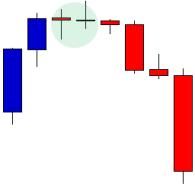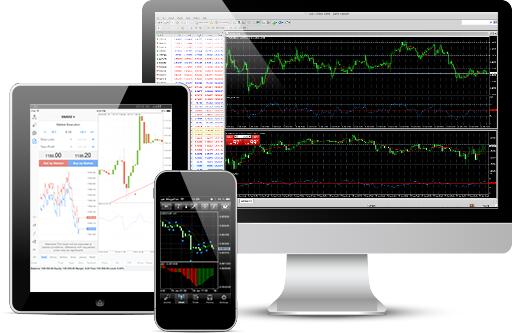Contents
The Chinese government still lacks deep and wide vision about how to perform fund-raising to handle international loans at global levels. The renminbi is issued by the People’s Bank of China, the monetary authority of China. Barchart is committed to ensuring digital accessibility for individuals with disabilities. We are continuously working to improve our web experience, and encourage users to Contact Us for feedback and accommodation requests.

Whether you know it as a yuan or renminbi, what matters is that the currency from China remains a central part of the world economy. However, RMB is often used as an unofficial abbreviation. In addition, due to China’s cross-border currency controls, the Chinese Yuan may trade for a different price in offshore markets, such as Hong Kong. In order to distinguish between these two prices, the unofficial abbreviation CNH is sometimes used to refer to the offshore price of the Chinese Yuan. CNY is the official ISO 4217 abbreviation for China’s currency. CNH is sometimes used as an unofficial abbreviation for the price of yuan in offshore markets.
Download 42131 free Yuan symbol Icons in All design styles.
Set of yen or yuan money bag icons in different colors in a flat… The two special administrative regions, Hong Kong and Macau, have their own respective currencies, according to the “one country, two systems” principle and the basic laws of the two territories. Therefore, the Hong Kong dollar and the Macanese pataca remain the legal tenders in the two territories, and the renminbi, although sometimes accepted, is not legal tender. Banks in Hong Kong allow people to maintain accounts in RMB.

The Tunisian dinar is the official currency of the Republic of Tunisia and is subdivided into 1000 milim. Yuan is the actual unit of currency while renminbi is the name of the currency itself. Anderson is CPA, doctor of accounting, and an accounting and finance professor who has been working in the accounting legacy fx broker review and finance industries for more than 20 years. Her expertise covers a wide range of accounting, corporate finance, taxes, lending, and personal finance areas. The CNH is the abbreviation for the Chinese Yuan Renminbi in the offshore market where the letter “H” was originally referred to Hong Kong.
Character map allows you to view and use all characters and symbols available in all fonts (some examples of fonts are “Arial”, “Times New Roman”, “Webdings”) installed on your computer. It can also help you lookup Unicode codes for entering symbols with keyboard. Character Palette allows you to view and use all characters and symbols, including yrn/yuan, available in all fonts (some examples of fonts are “Arial”, “Times New Roman”, “Webdings”) installed on your computer. For years, the Chinese Yuan had never been close to being considered an international currency because of the Chinese government’s rigid controls. However, this then began to change as the Chinese government started to promote the international use of the RMB. When shopping in China, a storekeeper might also express prices in terms of kuai, which translates into “pieces,” and is similar to how Americans use “bucks” to mean dollars.
The denominations were of ¥0.1, ¥0.2, ¥0.5, ¥1, ¥2, ¥5 and ¥10. The third series was phased out during the 1990s and then was recalled completely on 1 July 2000. Following the internationalization of the renminbi, on 30 November 2015, the IMF voted to designate the renminbi as one of several main world currencies, thus including it in the basket of special drawing rights. The renminbi became the first emerging market currency to be included in the IMF’s SDR basket on 1 October 2016. The other main world currencies are the dollar, the euro, sterling, and the yen.
The latter was introduced to the country by the Communist People’s Republic of China at the time of its founding in 1949. The new currency allowed the new administration to unify the Chinese economy, which was then divided among several regional currencies. It also distinguished the new administration from the previous government, whose policies had led to high levels of hyperinflation. In 1955, the RMB was revalued at a rate of 10,000 to one, meaning that each yuan in the new series replaced 10,000 old yuan.
Suggested future design
The numbers themselves are printed in financial Chinese numeral characters, as well as Arabic numerals. The denomination and the words “People’s Bank of China” are also printed in Mongolian, Tibetan, Uyghur and Zhuang on the back of each banknote, in addition to the boldface Hanyu Pinyin “Zhongguo Renmin Yinhang” . The right front of the note has a tactile representation of the denomination in Chinese Braille starting from the fourth series. See corresponding section for detailed information. The government also gradually allowed market forces to take the dominant role by introducing an “internal settlement rate” of ¥2.8 to 1 US dollar which was a devaluation of almost 100%.

Its issue of ¥0.1–0.5 even highlighted the Mongolian text. On 26 November 2015, the People’s Bank of China issued a blue ¥100 commemorative note to commemorate aerospace science and technology. In 1999, a commemorative red ¥50 note was issued in honour of the 50th anniversary of the establishment of the People’s Republic of China. This note features Chinese Communist Party chairman Mao Zedong on the front and various animals on the back. Renminbi is sometimes referred to as the “redback”, a play on “greenback”, a slang term for the US dollar.
Era of the planned economy
However, in 2016 the Renminbi took fifth place after the US Dollar, Euro, Yen, and British pound as the most used fiat currency. The fifth series of renminbi banknotes and coins was progressively introduced from its introduction in 1999. This series also bears the issue years 2005 (all except ¥1), 2015 (¥100 only) and 2019 (¥1, ¥10, ¥20 and ¥50). As of 2019, it includes banknotes for ¥1, ¥5, ¥10, ¥20, ¥50 and ¥100. During this series new security features were added, the ¥2 denomination was discontinued, the colour pattern for each note was changed and a new denomination of ¥20 was introduced for this series.
The base unit of both currencies shared the same Chinese character pronounced yuán in Mandarin Chinese and en in Standard Japanese. In China, the character was later abbreviated with the different character 元, which has the same pronunciation in Mandarin . Chinese currency is a hot topic these windsor broker review days for many reasons. Gold yuan money icon sign on polygonal low poly plexus line and… Since currency flows in and out of mainland China are still restricted, renminbi traded in off-shore markets, such as the Hong Kong market, can have a different value to renminbi traded on the mainland.
- Then, in 1980, 1, 2, and 5 jiao and 1 yuan coins were added.
- In 1800, the Chinese government launched a new currency system by issuing silver coins and banknotes called Yuan as an honor to the Yuan Dynasty.
- Some economists believe that these controls keep the yuan artificially devalued in order to make the country’s exports more attractive.
- In August 2015, Joseph Adinolfi, a reporter for MarketWatch, reported that China had re-pegged the renminbi.
- The Chinese yuan renminbi is the official currency of mainland China.
We’re the largest royalty-free, vector-only stock agency in the world. Learn more about how you can collaborate with us. Yen is used for Japanese currency and the Chinese Renminbi / Yuan. Microsoft Excel also offers the Yen symbol for Mongolia even though the tögrög currency uses another symbol.
While the overall design is unchanged, all coins including the ¥0.5 are now of nickel-plated steel, and the ¥1 coin was reduced in size. In 1991, a new coinage was introduced, consisting of an aluminium ¥0.1, brass ¥0.5 and nickel-clad steel ¥1. These were smaller than the previous jiǎo and yuán coins and depicted flowers on the obverse and the national emblem on the reverse.
Our currency rankings show that the most popular Chinese Yuan Renminbi exchange rate is the CNY to USD rate. The currency code for Yuan Renminbi is CNY, and the currency symbol is ¥. Below, you’ll find Chinese Yuan Renminbi rates and a currency converter. Click on a text sign inside a currency symbol block below to automatically copy China’s and Japan’s currency symbol ¥ into clipboard. In Japan it’s called “Yen”, while in China it’s called “Renminbi”, or “Yuan”. It’s used in economics and banking, shops and is money symbol for two of top-ten economies of the world.In this article you’ll find out how you can type Yen/Yuan ¥ text symbol right from your keyboard.
Notes for ¥200, ¥500, ¥5,000 and ¥10,000 followed in 1949, with ¥50,000 notes added in 1950. The notes were officially withdrawn on various dates between 1 April and 10 May 1955. The name “first series” was given retroactively in 1950, after work began to design a new series.
Renminbi
After each calculation the program assigns a Buy, Sell, or Hold value with the study, depending on where the price lies in reference to the common interpretation of the study. For example, a price above its moving average is generally considered an upward trend or a buy. Repeat these steps for all banknotes, coins, stamps, and gift cards you want to exchange. Complete the checkout process and get paid within a week or less. In Excel, currency symbols aren’t usually typed in, except perhaps for headings or other text cells. With a history of over 3000 years, Chinese currency existed in both Ancient and Imperial China.
The renminbi was added to the list of the top-five most-used currencies, making it part of the IMF’s Special Drawing Rights basket. The yuan character is also used in the names of other currencies, such as the New Taiwan Dollar, Hong Kong Dollar, Singapore Dollar, or the Macanese Pacata. A man jumping through the gap to achieve his financial goals.
Currency exchange outline icon in hand on white background. The fourth series of renminbi banknotes was introduced between 1987 and 1997, although the banknotes were dated 1980, 1990, or 1996. They were withdrawn from circulation on 1 May 2019. Banknotes are available in denominations of ¥0.1, ¥0.2, ¥0.5, ¥1, ¥2, ¥5, ¥10, ¥50 and ¥100. Like previous issues, the colour designation for already existing denominations remained in effect. The second to fourth series of renminbi banknotes were designed by professors at the Central Academy of Art including Luo Gongliu and Zhou Lingzhao.
However, after 1990 the Chinese government was forced to let the Yuan float or to be adjusted according to the demand and supply. During the command economy, the Chinese Yuan Renminbi was set to unrealistic exchange values and as a result, severe currency guidelines were put in place. When China’s economy opened in 1978, the Yuan Renminbi was only used domestically and foreigners used exchange certificates; this led to a powerful black market. From 1997 to 2005, the Chinese government pegged the Chinese Yuan Renminbi to the US Dollar at approximately 8.3 CNY to 1 USD.
All jiǎo coins depicted similar designs to the fēn coins while the yuán depicted the Great Wall of China. In the late 1980s and early 1990s, China worked to make the renminbi more convertible. Through the use of swap centres, the exchange rate was eventually brought to more realistic levels of above ¥8/US$1 in 1994 and the FEC was discontinued. It stayed above ¥8/$1 until 2005 when the renminbi’s peg to the dollar was loosened and it was allowed to appreciate. Banks and traditional providers often have extra costs, which they pass to you by marking up the exchange rate. Our smart tech means we’re more efficient – which means you get a great rate.
You can also use your Keyboard Viewer as an alternative to my list. Shortcut technique that works on Desktops and most Laptops running MS Windows. aetos broker You press Alt and, while holding it, type a code on Num Pad while it’s turned on. You can type many frequently used symbols with this method.
Along with printing the currency, the bank is also responsible for monetary and fiscal policy as well as financial regulation in China. The PBOC management team consists of a governor, six deputy governors, and a chief inspector. The Chinese Yuan Renminbi is the currency of China.
